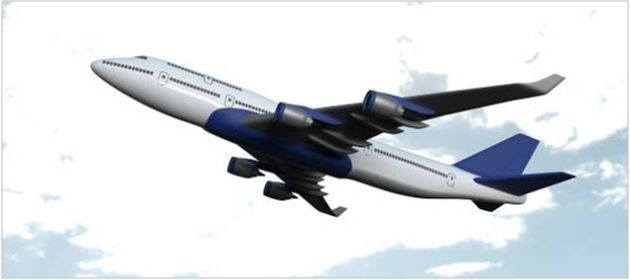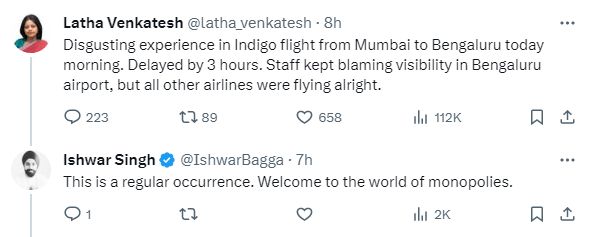People throw around the M word too freely. Whenever a company increases its price, behaves arrogantly, sucks at customer service, or acts in any other manner against the consumer’s proximate interest, Jane / Joe Six Pack rushes to accuse it of being a monopoly. This is wrong.
Monopoly means there’s only one supplier in a related market.
Not legal advice but the term “related market” is defined at the level of an industry or even more broadly than that. That’s because, if you define any market narrowly enough, you’d be able to claim that even the streetside vendor outside your house is a monopoly e.g. “GTM360 is a monopoly because it’s the only provider of marketing solutions whose name starts with G and ends with 0”.
Playing footloose with the definition of related market will lead to antitrust regulators shutting down (or breaking up) virtually every company on the planet on the pretext of being a monopoly. Obviously, nobody wants such an enforcement action.
In exceptional circumstances, courts have ruled some markets with multiple suppliers as a monopoly when the largest supplier had a market share of above 90% (or even 70% under SATA – Sherman Antitrust Act). See sidebar below for a summary of court rulings on this subject.
COURT RULINGS ON MONOPOLYApple insists that all iOS apps must be installed only from its AppStore. In other words, it does not permit “sideloading” of its apps from external app stores or even from the app developer’s own website. The judge in Epic Games v. Apple trial ruled that Apple is not a monopoly.On the other hand, Google permits Android apps to be sideloaded from outside its Play Store. App developers regularly publish the so-called APK file of their apps on their own websites. Despite that, the jury in Epic v. Google case ruled that Google unlawfully maintains a monopoly over the Google Play Store.
Here’s a partial list of companies that have been called monopoly in the public discourse:
- Amazon
- Swiggy
- Uber
Let’s look at the related market in which each of them operates:
- Amazon: A recent Princeton University study of Dark Patterns covered 11,000 shopping websites.
- Swiggy: EatSure and Zomato are leading food delivery companies. In addition, hundreds of restaurants deliver food.
- Uber: BluSmart, Rapido, FastTrack, InDrive, Ola, and Rapido are leading rideshare companies.
As we can see, all three companies operate in markets with multiple suppliers. Therefore, none of them is a monopoly.
I don’t want to get into sub-markets but I can’t resist the chance to debunk an egregious case of false accusation of monopoly wherein a tweeple describes a bad experience with Indigo Airlines in the following thread on X fka Twitter:
I pointed out to the OP that Indigo is not a monopoly since there are half a dozen airlines in India. They replied back saying Indigo has a monopoly on the said BOM-BLR route.
This is nonsense – as noted earlier, monopoly is defined at the level of a broad “related market”, which is aviation in this case. There’s no such thing as “monopoly on a particular route”.
But, just to indulge the OP, I did a quick search of BOM-BLR flights for 15 Jan 2024. This is what I found:
Total flights (nonstop only): 39
of which:
- Air India: 9
- Akasa Air: 7
- Indigo Airlines: 14
- SpiceJet: 1
- Vistara: 8
(Click here to download the search engine results page as a PDF.)
There are five airlines operating on this route, ergo Indigo is not the only supplier even on this route. With 14 flights out of 39 (36%), Indigo has nowhere near 90% market share. Therefore, Indigo is not a monopoly on this route, even if a regulator were to get overzealous and apply the term at the sub-industry level.
If there was a monopoly in the aviation industry, it was before the liberalization of the Indian economy. During the so-called License Quota Raj (LQR) era that lasted until 1991, Indian Airlines was the only airline operating in India.
In modern times, if we go strictly by the legal definition of the term, I can’t think of a single monopoly – in India or anywhere else in the world. The only exception is utilities like MSEB in Maharashtra and PG&E in California. That’s like an exception that proves the rule since regulation is deliberately written to encourage monoplies in utilities, per Matt Levine, author of the Money Stuff finance newsletter.
No. Common Man and Regulator may play footloose with the term Monopoly but Court rules Monopoly only if:
1) There's only one supplier in the market
2) #1 has happened due to govt decree
3) Sole supplier hurts consumer by price gouging.
Ergo monopoly verdicts are rare.— Ketharaman Swaminathan (@s_ketharaman) October 26, 2023
10 out of 10 times, when J6P calls a company a monopoly, s/he’s whining about moat, pricing power and / or vendor dependence.
You don’t have to be a monopoly to demonstrate the above attributes. Let me give a few examples to drive home this point.
- UX may be the moat of Zerodha but there are a dozen stock trading platforms with acceptable UX. So an app with “easy to use interface” is not the only app.
Monopoly of "being an easy to use interface"? That's a new one.
I only thought Zerodha was a monopoly of being the only brokerage company whose name starts with Z and ends with A. https://t.co/kLppFvz5CR— Ketharaman Swaminathan (@s_ketharaman) October 12, 2023
- In the 70 year history of credit card, interest rates have fallen from 15% to 0%, still the APR charged by literally thousands of credit card issuers has hovered in the same 24-36% range.
- Every enterprise software involves a certain technology stack, data format, upfront payment of license fee (onprem COTS software), longterm contract period (cloud SAAS software), and sunk implementation and user training costs. Accordingly, customers of any enterprise software are locked to its vendor and face significant switching costs to move to another vendor. This is true of virtually each and every enterprise software vendor and there are hundreds of them.
tl;dr: You can have moat, pricing power, and vendor dependence without being a monopoly.
While it might be a challenge to buy from suppliers showing these attributes, it’s silly to call all of them monopolies and urge regulatory intervention.
While the courts have a wide latitude on the matter of deciding monopoly, the common man cannot play footloose with its usage. Because, as we’ve seen, abusing the notion of monopoly is as bad as abusing monopoly itself.
I’m happy that mine is not the only voice in the wilderness on this subject:
They don’t have a monopoly.
It was my mistake for blindly taking the first flight on Google flights.
— Deedy (@deedydas) January 13, 2024
Before closing, here’s a Fun Fact about the ‘sh’ prefix I’ve used in the title of this blog post. The practice of saying a word twice with the ‘shm’ prefix the second time (e.g. nazi shmazi) was introduced into the English language by Yiddish-speaking Jews. (Source: Comment on Tom Lehrer video, parodying the German aerospace engineer Wernher von Braun).
Over time, the ‘m’ in ‘shm’ was left out, so the prefix became just ‘sh’ e.g. ‘disruption shisruption’, ‘hostel shostel’, ‘monty shonty’. In the case of “monopoly”, the ‘m’ in the basic word is also skipped, ergo ‘monopoly shonopoly’.




